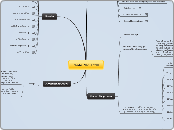作者:Aletze Estrada 14 年以前
403
Photo 2nd Term

作者:Aletze Estrada 14 年以前
403

更多类似内容
Takes just a simple object ans goes from Full shot up to Extra Big Close Up.
The shot considers a quarter of the face from a photographic subject/object. That means that it has to be really close to the object For example, an eye.
This shot takes the zone equivalent to half of the face from a photographic subject/object.
The shot is considered Close up when the picture shows half of the neck to the head.
The Medium close up shot considers the subject from the zone of the breastbone to the chest up to the head.
This shot takes the photographic object/subject from the waist to the breastbone up to the head. SO there must be a person in the picture (or an animal).
This shot comes from the western movies. The cowboy has the gun in his thigh, so the shot is taken from that part of the body to the head.
You have to shoot an object/subject complete (without any cuts to the person/form) for this picture to be consider as Full Shot.
This shot considers both environment and object/subject important. If the object/subject is not there, the picture is meaningless.
The environment in this shot is the important part of the picture but an object/subject gives more impact to it.
This shot considers only the landscapte with no photographic object /subject.
It means that the photographer estimates the colour temperature(because can't identificated) and makes it equal to a sample of white color that the photographer wants to use as a reference in the shoots.
R ↔ M G ↔ Y B ↔ C
In order to use it, one must know the complementary of light and pigment primary colours:
For this one the photographer must use the colour graphic in the camera menu to obtain the white color balance he's looking for for that specific moment of the day.
The incandescent (or tungsten) WB is used when the photos are taken in rooms that have artificial light.
Same as cloudy, but the light is removed not because a cloud is covering the sun but because a big object is doing it. This Wb doesn't produces shades in the photographic object/subject.
As the name says, it is used in a clouded day when the shadows are diffuse and soft.
It is used when the sun light is really strong and brilliant.
Either neon (yellow) or tungstene(green).
The flash will have the same color that the white light of a midday, so when someone is using it, the WB has to be set in the same type of light.
The camera will select the adjustment of WB for the photographer. (Because it is hard to identify the balance of the light).
This is important because in that way the image won't be affected by the moment/place we are taking the photo.
In this picture you are making a false horizon so you give the balance to something that doesn't have it OR you remove that balance and create an ilussion.
As the name says, you MUST TAKE the back of the shoulders of someone that HAS shoulders (a person/a few animals)
The Point of View shot shows the 'thing' that the photographer is seeing, so the photographer participates in the picture.
You shouldn't shoot at something that is stuck to the ground because you must be just below the object. So is the opposite of the Extreme High Angle Shot.
This shot is taken from a LOW angle, that means that you are making the ilussion or sensation that the object is big or powerfull.
This shot must be as the same level of the photographic subject/object.
This shot shows the picture from above as well BUT the camera must be inclined a little.
It is called "Birds Eye View", because takes an object from above. As if you were seeing it from the sky.